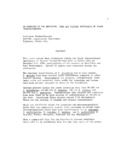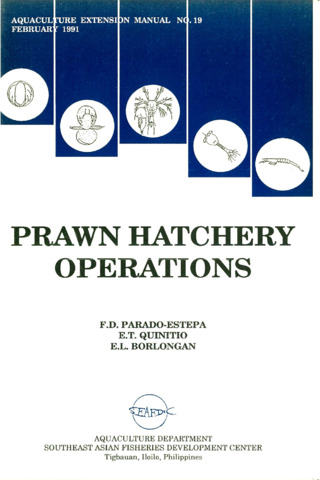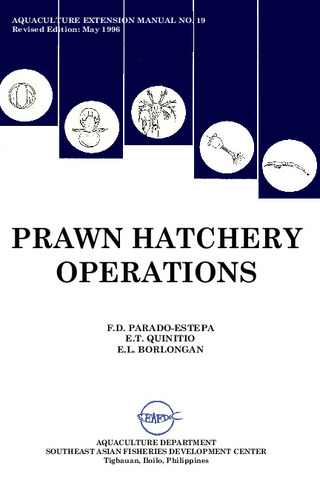| dc.contributor.author | Tabbu, N.S. | |
| dc.contributor.editor | Taki, Yasuhiko | |
| dc.contributor.editor | Primavera, Jurgenne H. | |
| dc.contributor.editor | Llobrera, Jose A. | |
| dc.date.accessioned | 2012-04-20T03:41:16Z | |
| dc.date.available | 2012-04-20T03:41:16Z | |
| dc.date.issued | 1985 | |
| dc.identifier.citation | Tabbu, N. S.(1985). Growth and survival of Penaeus monodon postlarvae with different feeding regimes and stocking densities in earthen brackishwater nursery ponds. (Abstract only). In Taki Y., Primavera J.H. and Llobrera J.A. (Eds.). Proceedings of the First International Conference on the Culture of Penaeid Prawns/Shrimps, 4-7 December 1984, Iloilo City, Philippines (p. 180). Iloilo City, Philippines: Aquaculture Department, Southeast Asian Fisheries Development Center. | en |
| dc.identifier.isbn | 9718511008 | |
| dc.identifier.uri | http://hdl.handle.net/10862/941 | |
| dc.description | Abstract only. | en |
| dc.description.abstract | The effect of different stocking densities (50, 100 and 150/m2) and two feeding regimes (natural food, consisting mainly of lablab, and natural food plus artificial diet) on the growth and survival of Penaeus monodon postlarvae (PL4 to PL5) were evaluated in eighteen 40 m2 earthen brackishwater nursery ponds using tidal water exchange for a period of 45 days.
Results of the experiment indicated that the effect of different stocking densities was highly significant (P<0.01) on growth but not on survival for the two feeding regimes. Likewise, no interaction effect was discerned. Shrimps given artificial feed (Treatments II, IV and VI) obtained higher mean weight gains of 1.55, 1.17 and 1.05 g, respectively, than those that were not given artificial feed (I-1.44 g, III-0.92 g, and V-0.66 g). Similarly, those reared with artificial feed attained better survival of 41.62% (II), 67.44% (V) and 52.14% (VI) compared to shrimp that were not given artificial feed (I-42.53%, III-54.61% and V-46.90%).
An exploratory economic study showed that the nursery operation gave promising results in all treatments. High rate of investment (ROI) was obtained to give a safe margin for the risk involved in this kind of business. Among all treatments, treatment V had the highest ROI of 693% and shortest payback period of 0.19 years. | en |
| dc.language.iso | en | en |
| dc.publisher | Aquaculture Department, Southeast Asian Fisheries Development Center | en |
| dc.subject | Brackishwater aquaculture | en |
| dc.subject | Diets | en |
| dc.subject | Pond culture | en |
| dc.subject | Shrimp culture | en |
| dc.subject | Stocking density | en |
| dc.subject | Penaeus monodon | en |
| dc.title | Growth and survival of Penaeus monodon postlarvae with different feeding regimes and stocking densities in earthen brackishwater nursery ponds | en |
| dc.type | Conference poster | en |
| dc.citation.spage | 180 | |
| dc.citation.conferenceTitle | Proceedings of the First International Conference on the Culture of Penaeid Prawns/Shrimps, 4-7 December 1984, Iloilo City, Philippines | en |
| dc.subject.scientificName | Penaeus monodon | |



